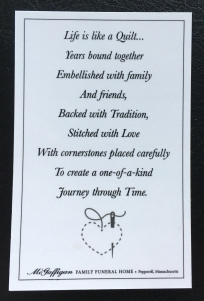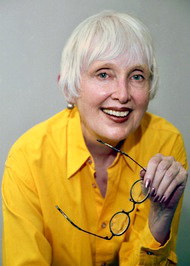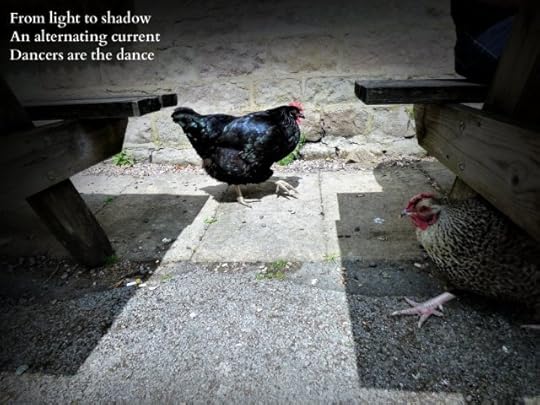K.D. Dowdall's Blog, page 31
September 9, 2018
Interview with Teacher Jennie Fitzkee!
Everything that Jennie does is special. She just as this way of connecting with everyone. Always such a joy!
INTERVIEW WITH TEACHER JENNIE FITZKEE!
Jennie Fitzkee
Please help me welcome teacher Jennie Fitzkee to Jemsbooks.blog Interview Segment. Jennie is the first teacher that I have had the pleasure to interview. Jennie is a lovely lady and an exceptional teacher of preschool. I happened upon her fabulous blog and have enjoyed reading about her classroom, students and what she has accomplished with these young children. She is utterly amazing.
Thanks so much, Janice.
My pleasure, Jennie. The stage is all yours.
1. What does a teacher need to do to be successful?
Pay attention to children. The lesson being taught by you will only be meaningful if children are engaged and interested. Does that mean the child is more important than the lesson? Yes, it does. Let me give you a few examples: A high school history teacher in upstate New York was beginning to teach about the…
View original post 1,563 more words
September 8, 2018
FANFICTION: ALL ABOUT DIALOGUE
(Not being very familiar with Fan Fiction I decided to take a look at what makes fan fiction popular and well, writing is writing so I had to read about it. One website in particular caught my attention because it seemed to be a good place to start. I am always willing to read about dialogue and everything else about improving my writing.) https://www.howtowritefanfiction.com
The following is an excerpt from the above linked site:
Dialogue is one of your primary story telling tools; it is how you move the story forward and how you reveal things about your character. If you write your story dialogue the way you talk every day, your reader will be bored in no time flat.
Have you ever had a heated discussion with someone, and then hours later, upon reflection, thought of the perfect witty retort? The best way to describe written dialogue is what you wish you’d said in the heat of the moment. It’s clever, witty, and sometimes misleading.
Dialogue Defined
Speaker Attributions tell the reader who is speaking. He said and she said are the most common variety.
A Beat is a description of physical action that can be used to indicate the speaker instead of an attribution.
How to Write Dialogue
Don’t explain your dialogue. When you follow dialogue with phrases like “he said angrily” or “she said harshly” you are explaining how the character feels. Instead, their feeling should be obvious by the words they say as well as their actions. Use of an adverb (ly) almost always catches you in the act of explaining dialogue. Instead of an adverb, use a beat of action to convey your characters feelings.
When you are writing speaker attributions, said is always the right choice. Do not saddle your characters with impossible actions; you cannot beam, smirk or grin a line of dialogue. Said is akin to punctuation. It disappears on the page. For the sake of variety, you can use beats of action in place of said.
Always place the character’s name or pronoun first in a speaker attribution. Use ‘Sam said’ instead of ‘said Sam’. This is the professional standard for dialogue.
Choose one way to refer to a character in a scene and stick with it. Don’t use “Detective” the first time and “Jane” a few paragraphs later. This is one case where shaking it up for the sake of variety can be confusing. Please note that this is within the confines of single scene, not the entire story.
Avoid ping ponging dialogue by having your characters refer to each other by name in order to eliminate speaker attributions. This is just plain awkward. Use the speaker attribution or a beat of action.
Use sentence fragments and contractions to make your dialogue sound real. Dialogue is the one place you can play fast and loose with grammar.
Do not use dialogue to data dump. Having your characters speak like an entry in Wikipedia is not natural. If you have a chunk of background information to reveal, do it piece by piece through both dialogue and exposition.
Let your characters lie to each other, argue and misunderstand each other. Allow your characters to be suspicious of each other, to wonder what the truth is. Real life is never wrapped up in a neat package, so give your characters the chance to disagree and they’ll sound more human.
Do This:
Read your dialogue out loud. Listen to see if it sounds natural, and if you can differentiate the characters in your scene by the words they say. As you listen, you should be able to find places where you stumble over words or places where you need beats of action. If your dialogue sounds stiff, make sure it isn’t announcing information that could be imparted through exposition.
My take on this short informative writing about dialogue:
Well, yes, a couple of good reminder points for the absolute beginning writer (oh wait – that’s me) with three books written and another being written as I write, I still consider myself a total beginner. I have actually found a few of the writing lessons here very interesting. For instance, the Seven Point Story Structure, All About Dialogue, and Revision are all helpful when writing.
I found I was actually committing a few sins in my dialogue that I was not even aware I was doing. I found this site very to the point with few flourishes of dialogue because, frankly, I need to write.
September 3, 2018
HOW TO WRITE THE PERFECT SYNOPSIS
[image error](From a Writer’s Work Shop)
Most agents will ask you to send them a submission pack containing three items:
A covering letter (see advice here and sample here)
A synopsis
The first three chapters / 10,000 words of your novel
Most agents will look at the covering letter first, then turn to the manuscript. If they like the first three chapters, they’ll be thinking, “This book looks really interesting. I’m definitely tempted . . . but is the author going to hold my interest over the full 300 / 400 pages? Is it worth me making that investment of time to read the whole thing?”
That’s where the synopsis comes in. The synopsis is there to answer the question, “What is the story of this book? Is there a clear story arc and will there be a satisfying ending?”
Obviously the actual experience of reading a synopsis is quite underwhelming. Synopses are boring, technical documents which (we hope) would not be true of your novel. But that doesn’t matter. Agents know synopses are dull, so all your synopsis really has to do is:
tell the agent in very clear terms what your story is
make it clear what your hook / premise / elevator pitch is (more info here)
give some kind of feeling for why the story matters & how the jeopardy increases
sketch out an ending that feels satisfying
But – and this should be reassuring – agents do know that synopses are hard to write and they care less about the synopsis than any other part of your submission package.That means you probably don’t need to worry excessively about your synopsis – just follow the guidelines below and you’ll do just fine.
How to write a perfect synopsis
A perfect synopsis has the following ingredients:
Length: 500-800 words
Main purpose: Summarise your plot
Secondary purpose: Make it clear what Unique Selling Point your book has
Language: Be businesslike: clear, to the point, neutral.
Presentation: Be well-presented: no typos or spelling mistakes. Normal font size, normal margins. Line spacing no narrower than 1.5
Character names. It helps if you put the names of main characters in bold or CAPS when you first introduce them. That way, if an agent has forgotten who Carlotta is, it’s easy for them to skim back and jog their memory. (Remember that agents are reading a lot of these things, so they have about a million character names in their heads at any one time.)
Extra points. It’s certainly not essential, but if you have a really compelling way to ‘sell’ your story in 2-3 lines maximum, then you could insert that little snippet up at the top of your synopsis as a way of reminding agents why they’re interested in this MS in the first place. For example, a certain Ms Rowling might have opened her synopsis with, “Harry Potter, an orphan, thinks he is an ordinary boy when an owl brings him a letter inviting him to attend wizard school.” That’s not strictly speaking synopsis material, but it does instantly emphasise the book’s appeal.
And remember: Tell the story: your job is not to sell the book, write dust jacket blurb, or anything else. Just say what happens in the story. That’s all you need to do.
And luckily there are things you don’t need to do:
Go into great detail about setting. If you were writing a synopsis for a Jane Austen novel for example, you might simply say “This novel is set in a small village in Regency England.”
Go into vast detail about character – a few quick strokes are all that you need. For example you might say: “Bridget Jones – a ditzy, mildly boozy twenty-something – …”
Be scrupulous about plot detail. It’s fine to skip over subplots or ignore some of the finer detail of how X accomplishes Y. The truth is, you won’t have time to include those things in a 700 word summary anyway. Agents know that the synopsis is at best an approximation of the story so you don’t need to have a troubled consicence.
You also don’t have to give away your very final plot twist – though you should make it clear that there is one. For example, you could write, “When Olivia finally catches up with Jack at the abandoned lighthouse, he tells her the real secret of his disappearance – and their final bloody reckoning ensues.” Mostly though, a synopsis is the ultimate plot spoiler, and your job is just to spill the beans whether you like it or not.
August 30, 2018
Smorgasbord Writer in Residence – Back by Popular Request – The Party’s Over – Cabaret : the Evolution of a Musical
Cabaret is great play and a wonderful movie adaptation. Sally, thank you for sharing!
August 29, 2018
The Importance of Story Setting by Gordon Chaplin
“On Saturday afternoon Billy Buck, the ranch-hand, raked together the last of the old year’s haystack and pitched small forkfuls over the wire fence to a few mildly interested cattle. High in the air small clouds like puffs of cannon smoke were driven eastward by the March wind. The wind could be heard whistling in the brush on the ridge crests, but no breath of it penetrated down into the ranch-cup.” –John Steinbeck, The Leader of the People. (1937)
Gordon Chaplin writes: Now that is powerful writing. So there’s the setting of the story. I’ll never forget it, though its characters and plot have faded in my mind and it’s only through the setting that they can be recalled. The setting never gets in the way. It is the way of the story.
I first read Steinbeck’s Cannery Row in high school, too, and was mesmerized by its mythical setting among the sardine canneries of Monterey. The book was published in 1945. When I found myself in college in the bay area in the seventies, I made a pilgrimage. The setting sets the stage for what comes next and almost determines it.
In the next paragraph we encounter a black cypress tree full of white pigeons so we know we’re somewhere near the California coast. The hills around the ranch-cup are “washed with lean March sunshine. Silver thistles, blue lupines and a few poppies bloomed among the sage bushes.” The poppies are another giveaway. They are the California state flower.
“Jody plodded up the hill toward the ridge top. When he reached the little cleft where the road came through, the afternoon wind struck him and blew up his hair and ruffled his shirt. He looked down on the little hills and ridges below and then out at the huge green Salinas Valley. He could see the white town of Salinas far out on the flat and the flash of its windows under the waning sun.” Not too far away is the Pacific coast, where Jody’s grandfather, who’s coming to visit, lives and looks out, dreaming of his days as a pioneer leading the people west across the country. He can go no further.
*****This guest post on Writer’s Digest is by Gordon Chaplin. Chaplin is the author of the novel Joyride and several works of nonfiction, including Dark Wind: A Survivor’s Tale of Love and Loss and Full Fathom Five: Ocean Warming and a Father’s Legacy. His latest novel, Paraiso, is now available. He lives with his wife and daughter in New York City and Hebron, New York. Visit him at gordonchaplin.com and follow him @Gordon Chaplin.
August 25, 2018
Critical Thinking: The 5 Factors that Earn 5 Star Reviews!
An excerpt from: Paul Goat Allen | March 12, 2018, Writer’s Digest. Paul Goat Allen has worked as a genre fiction book critic and written thousands of reviews for companies like BarnesandNoble.com, Publishers Weekly, the Chicago Tribune and Kirkus Reviews.
Novelists live and die by reviews yet uncovering what garners a gushing ovation or blistering takedown is often a mystery. A professional critic lays out what it takes to earn five-star book reviews. For two decades I’d been working as a freelance genre fiction book critic for outlets such as BarnesandNoble.com, Publishers Weekly, Kirkus Reviews and the Chicago Tribune. After sharing my credentials with the group, some of the writers began telling stories about mediocre or bad reviews they’d received at different points in their careers from one or more of the companies I’d listed.
As a reviewer, not much has changed since then. I enjoy all genres and have reviewed thousands of titles in hundreds of sub-genres ranging from apocalyptic fiction to zombie erotica. (Yes, there’s such thing as zombie erotica.) In the end, genre categorization matters little to me—it’s all about the story. With that in mind, I decided to formalize a universal framework through which I process and analyze my various reading experiences. While there are undoubtedly specific narrative elements I look for in-particular-genres (pacing and tension level in thrillers, for example), there’s a pyramid of qualities—a Hierarchy of Needs, if you will—that I seek in every story. While highly simplified, it’s this structure that dictates whether I give a book a positive or negative review.
These five criteria will not only provide a glimpse into how a veteran book reviewer dissects and evaluates a novel but, hopefully, make you look at your writing in a different light. See for yourself: Does your work-in-progress have what it takes to earn a positive review?
The Book Reviewer’s Hierarchy of Needs: How to Earn Five-Star Book Reviews
Readability
A book’s degree of readability is the base layer of my reviewer’s pyramid, and the foundation for any good story. The quality of a novel—narrative clarity, narrative fluidity, having a coherent storyline—is directly related to the number of times I put that book down. Some are so bad, so poorly written, that I struggle to get through a single paragraph without wanting to walk away. Others have such a fl uid plot that I find it virtually impossible to stop reading—Tad Williams’ The Witchwood Crown and Jim Butcher’s The Aeronaut’s Windlass being two such examples of utterly readable, page-turning novels.
I’ve read a lot of “unputdownable” books over the last few decades, and the vast majority of these all have something in common beyond a clear and fluid narrative: The stories have noticeably strong chapter beginnings and endings. It’s a small thing, but a great way to compel readers to keep reading. How can you put a book down when every chapter begins and ends with a cliffhanger sequence, bombshell plot twist or powerful statement? When I consistently find these elements in a novel, I know the author fully understands the significance of readability.
Conversely, novels that aren’t as readable—that are poorly written with awkward sentence structure, a confusing storyline, weak chapter beginnings and endings—are almost asking to be tossed aside. This may sound obvious, but if you can’t compel a reader to read your story, then you need to focus more on your craft before penning another book.
Immersion
I define immersion as the ability for me, the reader, to not only lose myself in a novel (I call these “stay-up-all-night-till-your-eyes-bleed” reads) but to experience the story intimately, living vicariously through the characters. This trick is accomplished through a continued focus on setting, rich description and atmospherics. I don’t want to experience the story as a detached viewer looking down at what’s happening—I want to feel like I’m in the story.
The litmus test for this is easy. If I become so engaged with a book that I lose track of time—if I glance at the clock and hours have passed by—you’ve succeeded in drawing me fully into your read. Writers who are absolute immersion masters (think Cherie Priest, Justin Cronin, Charlaine Harris) are so good at captivating description that weeks, months and oftentimes years after reading their novels I can still vividly recall specific scenes.
This layer is where many writers stumble, and here’s why: While they may excel at world-building and meticulous description at the beginning of a novel, once the action and adventure ramps up, they not only lose focus but completely ignore description altogether. I’ve seen this happen countless times in every genre: rich description for the first 100 pages or so, then almost nothing in the final 200. It’s called literary escapism for a reason. If I can’t lose myself in a read—from beginning to end—then I haven’t fully escaped. Writing the Intimate Character: Create Unique, Compelling Characters Through Mastery of Point of View
Character Depth and/or Plot Intricacy
Three-dimensional, interesting and identifiable characters bring emotional connectivity and intensity to the read. If your readers aren’t emotionally invested in your characters, then the narrative impact of your story is inevitably going to be negatively impacted. Emotions wield power. If you can bring your readers to tears, make them laugh out loud or scare them to the point of checking under the bed, then you’ve succeeded on some level.
Creating authentic characters to whom readers can relate is a solid achievement—but an obvious word of warning: Stay clear of clichés and stereotypes. Overused conventions—like the Chosen One in fantasy who is consistently a white male, or the emotionally damaged billionaire entrepreneur in erotic fiction who needs to sexually dominate his love interest—even if brilliantly rendered, will underwhelm and disappoint more than a few readers (and reviewers).
Now, the reason I include an “and/or” between character development and plot intricacy is because, in some rare cases (particularly in mainstream thrillers), a novel with an impressively knotty storyline can still succeed with relatively cardboard characters.
Which is why plot intricacy is key: Why read a novel where you can accurately predict what’s going to happen after a few chapters? (I do that quite often. After reading the first chapter or two, I’ll jot down a prediction in my notes. You’d be surprised how many times I’ve guessed the ending correctly.) I just finished reviewing a brilliant historical mystery for Publishers Weekly that was filled with so many plot twists I was left guessing until the last few pages. It doesn’t matter if you’re writing a fantasy or a thriller or a romance—the plot has to be intricate enough to keep your reader simultaneously engaged and a bit off balance.
Originality and Innovation
This one ties in with embracing originality, be it atypical characters or unconventional story structure. So many books out there today are built upon unoriginal, rehashed, derivative storylines. I read a lot. And I get bored easily, especially when reading the same basic story arc again and again. My advice? Don’t play it safe. Write a story that you’ve never read before. In a 2016 Goodreads interview I conducted with fantasy novelist Michael J. Sullivan, author of Age of Myth, he said,
“It doesn’t matter if it’s been done before. It just matters if it’s being done well now.”
I love that quote. Just because something has been done before doesn’t mean it can’t be re-envisioned or reimagined but be innovative—put a new twist on an old mythos, turn a stereotype on its head. Have the courage to be creative!
Thematic Profundity
In the introduction to the 2006 reissue of Walter M. Miller Jr.’s 1960 Hugo Award–winning classic, A Canticle for Leibowitz, Mary Doria Russell writes, “You’ll be different when you finish it.” That’s my hope for every novel I pick up—that within the story there will be a kind of spiritual and/or existential wisdom, a kind of revelation or insight that will change the way I look at myself and the world around me.
A novel that holds this kind of thematic power—as well as the other elements in the Hierarchy of Needs—will get a starred review from me every time. Stories, no matter the genre, have the power to change lives. Novels like Andreas Eschbach’s The Carpet Makers, Margaret Atwood’s The Handmaid’s Tale and Yevgeny Zamyatin’s We have irrevocably changed who I am. After all, that’s the ultimate goal, right? To write a commercially successful and critically acclaimed novel that is both entertaining and enlightening.
Evaluating a novel is a cumulative process. Those with masterful character development but zero immersion will still receive a poor review, for example, while a thematically profound read with excruciatingly bad readability will receive a terrible review.
May this Hierarchy of Needs not only make you more aware of how your writing is experienced by readers—and jaded book reviewers like myself—but also offer up a few invaluable insights that can be used to improve your craft. Who knows, maybe my next starred review will be yours.
[image error]Paul Goat Allen has worked as a genre fiction book critic and written thousands of reviews for companies like BarnesandNoble.com, Publishers Weekly, the Chicago Tribune and Kirkus Reviews.
August 23, 2018
Milly – The Epilogue
Milly, the Epilogue –

This card was passed out at the memorial service.
It’s an odd thing to say that a eulogy was inspirational. Yet for Milly, how could it be anything less? And, it’s unusual to laugh out loud at the words the minister says about someone who is deceased. But again, when it comes to Milly…
It happened like this:
Milly’s funeral, a memorial service, was held in an old New England church – 250 years old to be exact – in pouring rain and humidity that felt like I was sitting in the rain. My husband and I arrived quite early, only to discover everyone else had the same idea. The church was packed. Sardines in a sauna. The minister was a young man who didn’t know Milly well. He began by telling the congregation of his first meeting with Milly.
“Where’s my quilt?” Milly asked me. I’ve had plenty of…
View original post 353 more words
August 21, 2018
How to Use Your Reviews and Excerpts – by Carolyn Howard-Johnson…
I am writing a non-fiction and this is great information to take into account when I publish my first non-fiction. Thank you Chris for sharing. I am reblogging this.
 Chris The Story Reading Ape's Blog
Chris The Story Reading Ape's Blog

on NonFiction Authors Association

USING YOUR REVIEWS AND EXCERPTS
The beauty of reviews and the praise extracted from them is that you can continue to use them as long as you want and some can be used for more than just the book that is being reviewed.
An example of that is a review or excerpt from a review that praises your writing style as opposed to the specific title.
With that in mind, you are ready to go to work
Continue reading HERE
August 16, 2018
places not yet lived ~
Do you think that your dreams are past memories from another like or are you being haunted by someone who needs a mystery resolved? You are not alone about having dreams like this. Thank you for sharing. What a wonderful or scary mystery this is.

as the steel regard of morning
pulls my tired soul from dreams –
another life beyond the reach
of lowly expectation
stirs within the mystery
and I close my eyes again
flirting with the patterns
where faded roses bloom –
across some great tomorrow
tis there my longing burns
letters curve unsettled
on the page –
by memories returning
of places not yet lived
light beyond the shadows
of my room
. . .
Author’s Note: Those who know me well are aware of recurrent
dreams – of a house in which I have never lived,
on a road I’ve never traveled. Yet, so familiar is the dream that I know the steps from the porch
to the gate, the slant of the yard into the trees. I know the count
of roses on the faded wallpaper,
and the pause between drips into an old basin.
Once asked, ‘Do you…
View original post 21 more words
Polarity #midnighthaiku
I grew up in farming country in New England and we would go to our neighbor’s farm and feed the chickens and milk the cows. It was wonderful. Chickens are really interesting to watch how they do seem to dance around each other. I like your short poem. It made me remember my childhood.











